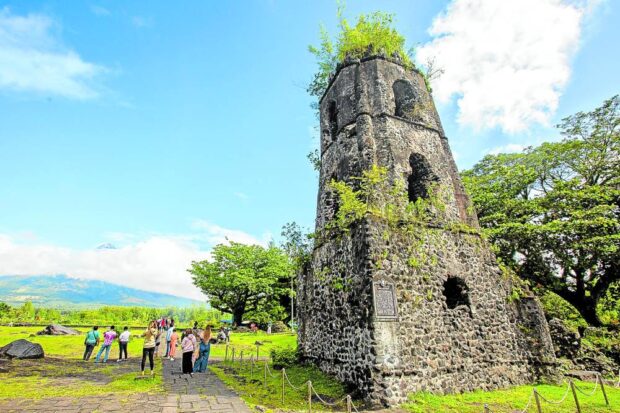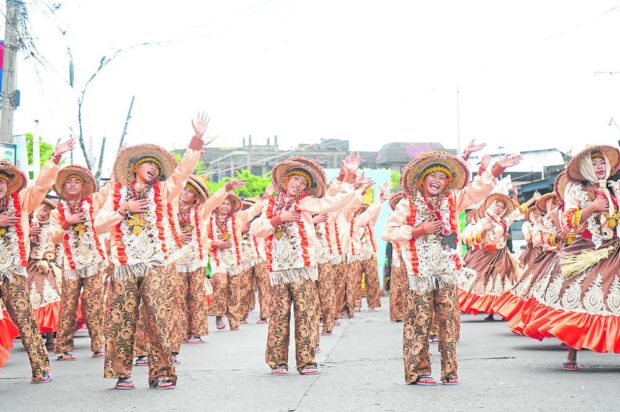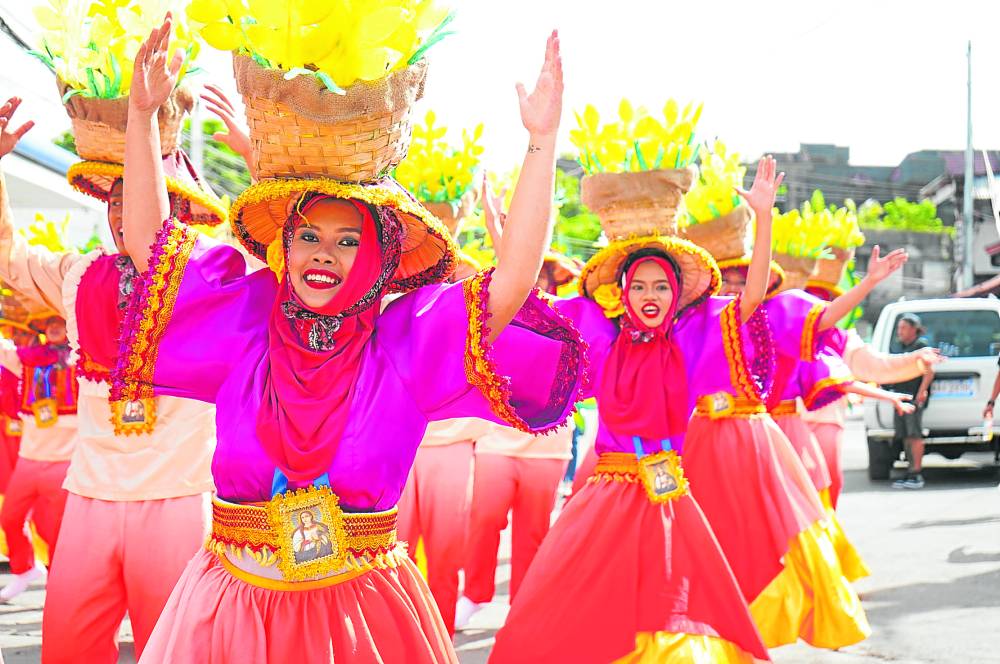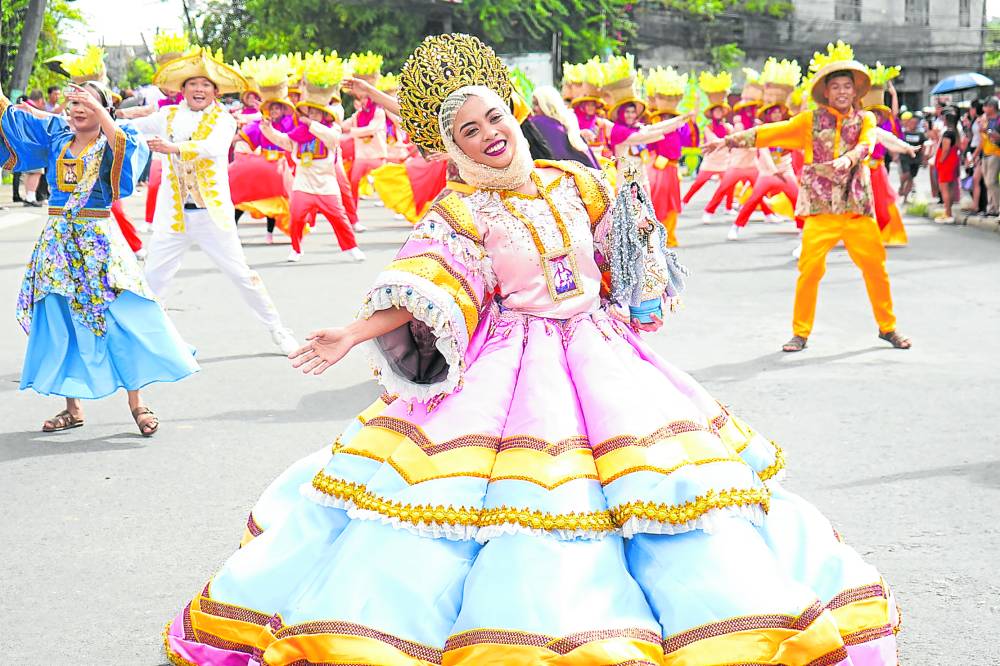For Albayanos, Cagsawa is symbol of identity

LANDMARK Tourists visit the iconic Cagsawa Ruins in Daraga town, Albay province, as it celebrates the 300th anniversary of the church’s completion. The local government has prepared cultural activities, including lectures on history, as part of the monthlong celebration of Cagsawa Festival. —MARK ALVIC ESPLANA
DARAGA, ALBAY—Parish church musician Clarence Catubig, 22, has begun to truly understand the importance of the iconic Cagsawa ruins, touted the most photographed man-made structure in the country.
At the 300th anniversary and commemoration of the Cagsawa church during the Cagsawa Festival, Catubig was treated to a lecture by historian Danilo Gerona about the church, and Daraga’s culture and history at the opening of the monthlong celebration on Feb. 1.
Knowing now its history, Catubig has begun to appreciate how the ruins enriched his role as an instrumentalist at the Our Lady of the Gate Parish in this town.
Cagsawa Festival opened with a solemn Mass celebrated by Rev. Franciso Capil at the Cagsawa Ruins open grounds followed by the blessing of the monthlong trade fair and the lecture.
“[Cagsawa Festival] is a celebration of the resiliency of Albayanos, a celebration of culture, a celebration of faith and a celebration of identity,” Catubig told the Inquirer.
Gerona’s lecture and symposium was followed by the opening of the photo gallery exhibit by photojournalist Jose Felipe “Ping” Peralta. The exhibit will run until the end of the month.
This year’s festival also coincides with the 210th year commemoration of the powerful Mayon Volcano eruption of 1814, which damaged the Cagsawa Church and destroyed the nearby Budiao Church. The ruins of the former is a popular site among tourists, and the latter, a subject of research for archeologists.

FAITH IN COLOR Clad in colorful costumes, dancers from seven contingents from all over Bicol region showcase the culture and history of the first Cagsawa Church that was completed 300 years ago in Daraga, Albay, during the regional street dance competition on Friday. —PHOTOS BY HAROLD S. OLITIN/DARAGA PUBLIC INFORMATION OFFICE
Completion
The first Cagsawa Church, built in the 1580s, was made of light materials and was described by locals in an old petition letter as having “rotting wooden posts.”
Gerona said that the 300th anniversary of the completion of the church’s construction was worthy of commemoration because, he said, this was a showcase of how constructions were made in the past.
“Most of what is celebrated in history are things that are not present anymore, and yet after 300 years, here is an icon that still stands,” Gerona told Inquirer.
The Cagsawa Franciscan Mission, he said, was founded in 1587 by Fray Pedro Bautista, who was martyred in Japan on Feb. 5, 1597.
Prior to the Spaniards’ arrival in Bicol, Cagsawa (then known as Cagsaua) was also existing as a barrio of Camalig town.
When Albay was raided by the Dutch in the 1620s, Cagsawa was not spared.
A century later, in 1721, a petition by the locals urged Fray Alonzo de la Zarsa, the head of the Franciscans, to allow them to rebuild Cagsawa Church, this time using stone.
Locals requested church authorities that they be allowed to collect corals from the Albay Gulf to make the rebuilding of the church possible.
Iloilo connection
By the mid-18th century, Cagsawa had a population large enough to be declared a town.
Gerona said that the minimum requirement for a place to be considered a town then was 2,000, but Cagsawa already had 3,766 residents. Throughout the Bicol peninsula, it was even the most populated area at that time.
There were 380 school children in Cagsawa back then, far more than most towns had.
“That (high number of school children) meant that the culture was rich even as early as 1751,” Gerona said during his lecture at the opening of the festival.
By 1775, Cagsawa sustained its lead in terms of population as the number of residents rose to 6,352, as the emerging town continued to attract migrants.
“In the past, one of the barometers of development was population. If the population is high, that only means that it is attractive to traders. Cagsawa was a showcase of development, and I think that was because of abaca (Manila hemp),” Gerona said.
Cagsawa’s prosperity was due to the presence of Ilonggo mestizos who saw the opportunity to invest in abaca due to its worldwide demand, he added. This was noted in the letters by Fray Francisco Aragoneses, the curate of Cagsawa during the 1814 eruption of Mayon.
Iloilo, then spelled Yloylo, was one of the first provinces in the archipelago to prosper, and most of the Ilonggos that resided in Cagsawa were from Molo.
Yearlong celebration
Local officials in Daraga said that Daragueños and tourists have much to look forward to in the monthlong Cagsawa Festival, which celebrates the rich culture and history of Cagsawa from the precolonial period to the present.
George Gio Brondial, Daraga public information office officer in charge, said local officials were planning to turn the Cagsawa Festival into a yearlong event with monthly culture and history-centered celebrations.
“Since we are celebrating the rich culture and history, we don’t [want] it to be left out in our events, so we made sure that we have cultural presentations,” Brondial said.
READ: Cagsawa Ruins in Albay now open to tourists
He said that aside from the usual street dance performances, Daraga will also have a cultural night and competitions to promote the local language through songs that depict the culture and history of Cagsawa.
“One of our agenda this time is to promote the culture and history of Daraga which is why we are coordinating with cultural experts in Bicol to further strengthen the programs on cultural promotions of the town,” Brondial said. —WITH A REPORT FROM MAIDA V. BORAGAY / Inquirer Intern

